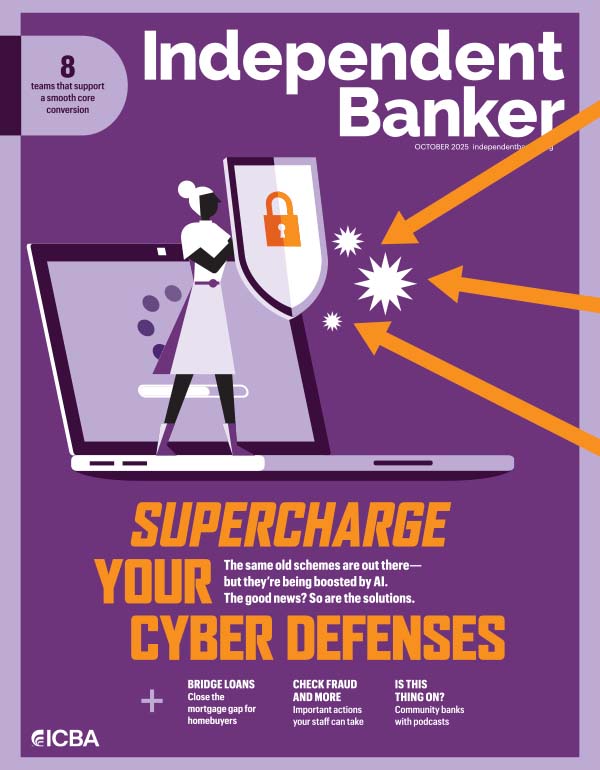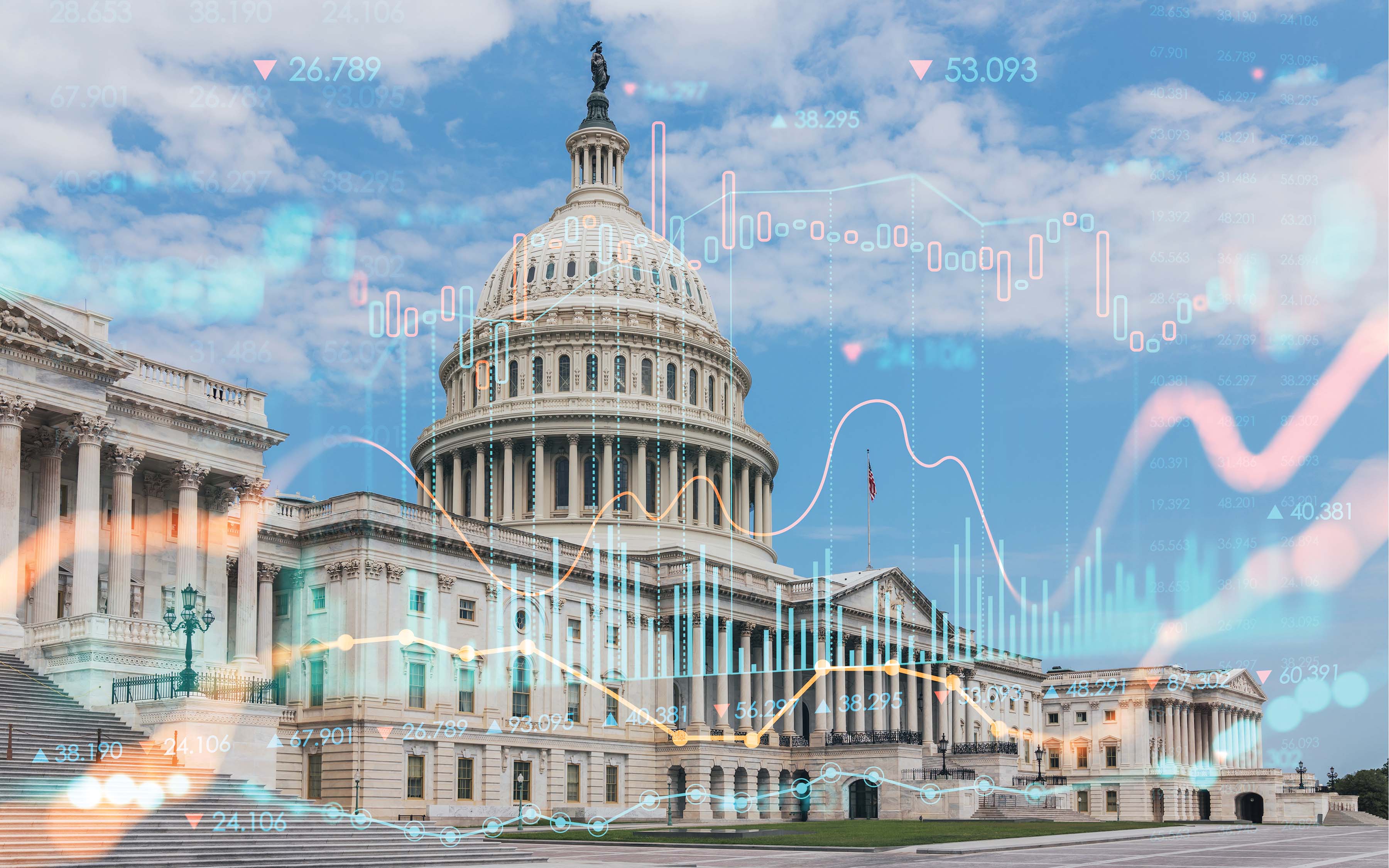Surging demand for small-dollar loans is opening new doors for community banks to assist small business owners, support their communities and grow their customer relationships via the Small Business Administration’s 7(a) program.
During the first quarter of fiscal year 2025, the SBA hit its second-largest 7(a) lending volume since 1991. Portfolio expansion is being driven by dramatic growth in the program’s smallest loans, those under $150,000.
Among the almost 45,000 7(a) loans approved as of April 10, the vast majority (81%) are $500,000 or less and more than half are for amounts of $150,000 or less. The market for these loans is growing, and community bankers are getting in on the action.
The reasons behind the small‑dollar loan boom
Although the SBA credits the increase in small-dollar lending to program reforms aimed at making financing more accessible, especially to underserved markets, some bankers credit the rise in small-dollar lending to higher interest rates.

“I think the deals themselves have shrunk a bit because folks weren’t quite ready to invest that large amount of money at those higher rates, but they will do smaller deals,” says Christopher Hebbard, senior vice president and senior credit officer at $680 million-asset 1st National Bank of Scotia in Scotia, N.Y.
The difference in monthly payment on a $350,000 loan at 7% versus 5% isn’t significant, but a higher rate can have a big impact on cash flow for bigger loans of $1 million or $2 million, Hebbard adds.
He says 1st National is seeing more small-dollar lending activity across its conventional business loans. The number of loans the community bank made below $500,000 in 2023 and 2024 jumped 30% compared with the volume in 2021 and 2022.
Many bankers view SBA 7(a) loans as an important part of their toolkit to serve their small business customers. A 7(a) loan can help a bank get to a “yes” to make a loan for a borrower who doesn’t qualify or is on the margin of qualifying for a conventional loan.
“Where community banks really thrive is in relationship lending and the customization of helping a borrower find the best fit, whether it’s a conventional loan or a 7(a) loan,” says Stephen Keen, senior vice president of congressional relations at ICBA.
A chance to cross-sell
7(a) loans can be a stepping stone to growing banking relationships and cross-selling additional products and services.
A key strategy that 1st National uses to expand the banking relationships with its business customers is data mining within its loan and deposit portfolios.
“We really make a concerted effort to get the information on these customers in the hands of our development officers, who can then reach out to these businesses,” says Hebbard.
Guarantees also can be sold into a secondary market, in most cases at an attractive premium, which allows community banks to generate noninterest fee income.
“If a bank is having liquidity issues, they can make a large loan, sell the guarantee and recycle those dollars for future lending needs,” notes Arne Monson, president and cofounder of Holtmeyer & Monson, a national SBA and USDA lender service provider in Memphis, Tenn. About 80% of the banks that Holtmeyer & Monson works with sell the SBA guarantees as soon as the loan is closed and disbursed.
Know your 7(a) options
The 7(a) loan program’s terms, conditions and guaranty percentage vary by the type of loan. Here’s an overview of each:
Standard 7(a): Loan amounts between $500,001 and $5 million; maximum SBA guarantee of 75%.
7(a) Small: Term loans that are $500,000 or less. The maximum SBA guarantee is 85% for loans up to $150,000 and 75% for loans greater than $150,000.
SBA Express: These loans allow certain lenders to use their own processes and procedures in exchange for a lower SBA guaranty percentage. Loan amounts are $500,000 or less and a maximum SBA guarantee of 50%.
Export Express: Smaller-dollar revolving lines of credit or term loans to support small businesses that wish to develop the export side of their business. The maximum loan amount is $500,000, and the SBA guarantees up to 90% for loans of $350,000 or less and 75% for loans greater than $350,000.
7(a) Export Working Capital Program: Loans for businesses that need additional working capital to support export sales. The maximum loan size is $5 million and maximum SBA guarantee is 90%.
Harnessing organic growth for SBA loans
Honor Bank has seen an uptick in its SBA 7(a) lending in recent years, which it attributes to organic growth versus a targeted effort by the bank.
“When it comes to early stages and business acquisitions, that’s where the SBA really shines as an offering to customers,” says Doug Buck, vice president and commercial lender at $400 million-asset Honor Bank in Honor, Mich.
The community bank recently helped a small retail franchisee with two stores obtain a 7(a) loan that allowed the business to buy out another franchisee and add a third store. In that case, the underlying collateral was somewhat limited because the location was in a leased space.
“When you run into that situation where you have a significant amount of goodwill, or you have a leasehold versus the actual real estate, these are all areas that banks sometimes struggle with in terms of having adequate enough collateral to do a loan,” says Buck. The SBA guarantee can serve somewhat as a substitution for that collateral, he adds.
Buck believes that some of the changes the SBA has made to the 7(a) program in recent years have made the program easier to use for both lenders and borrowers. For lenders, it’s allowed for greater flexibility to pass costs on to the customers, whereas before that ability was more limited.
“What this has done for us is made it easier to use third-party loan service providers to help us navigate through the knowledge that is required to do SBA lending well,” says Buck.
The SBA program can be complicated in terms of who’s eligible to use the program and what loans can be used for, with nuances to underwriting related to issues such as appraisals, insurance requirements and environmentals.
The responsibility is on the lender to make sure they follow all the SBA requirements and procedures, and a lender may not realize until they get to the end that they’ve missed a step or made a mistake. Especially for those banks that are only doing a limited number of SBA loans each year, it’s hard to justify having an SBA expert or full team on staff.
“By using an LSP [lender service provider], it’s allowed us to bring that expertise to the bank in a cost-effective way,” says Buck.
Mixed bag of SBA reforms
Quick Stat
81%
of the nearly 45,000 7(a) loans approved as of April 10 are $500,000 or less.
Source: U.S. Small Business Administration
The SBA announced a number of reforms to its nearly 500-page standard operating procedure (SOP) in 2023, and last year it also lifted a 30-year moratorium on licensing new Small Business Lending Companies.
The changes were not without controversy, including strong opposition from ICBA and other industry groups over concerns surrounding loosening credit standards and expanding the licenses to nonbank fintechs.
“ICBA opposed a lot of those new rules because we thought that it could present programmatic risk that could drive up default rates, which could then lead to increased fees, both on the bank and passed along to the customer,” says Keen.
According to Monson, two changes stand out for encouraging small-dollar lending in particular. In 2023, the SBA waived the up-front guarantee fee for any loan or line of credit up to $1 million, which is legislated through the end of 2025.
Another change that was made a few years ago was a truncated application and streamlined processing for 7(a) loans below $500,000, which makes those smaller-dollar loans a little bit more efficient for banks.
Along with its new 2023 SOP, the SBA has been emphasizing a “do what you do” concept that effectively gives banks more flexibility to use their own current practices, underwriting and documenting in closing loans.
“Everyone’s kind of waiting to see how that’s going to play out,” notes Buck.






